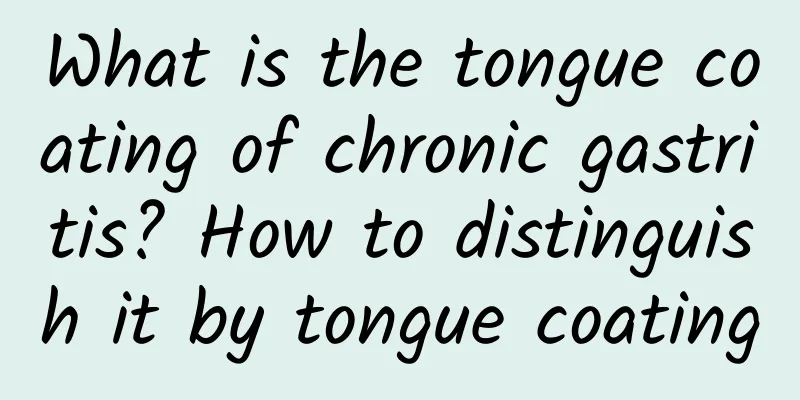Will otitis media heal on its own?

|
Otitis media is a disease with a relatively high incidence rate among children. Generally speaking, if the condition is not serious and it is chronic otitis media, it will slowly recover on its own. However, if it is acute otitis media and the condition is more serious, the patient may need to go to the hospital for treatment before he can recover completely. So, how to check and treat otitis media? Below is a detailed introduction to the relevant knowledge about otitis media. 1. Will otitis media heal on its own? This depends on the severity. If this disease is chronic otitis media, you can recover slowly by paying attention. If it is acute otitis media, it will not work and requires active anti-inflammatory treatment. Severe cases may lead to perforation. 2. Otitis media examination method 1. Tympanic membrane The pars flaccida or the entire tympanic membrane is recessed, manifested by shortening, deformation or disappearance of the light cone, posterior and superior displacement of the handle of the malleus, obvious outward protrusion of the short process of the malleus, and a decrease in the angle between the anterior and posterior folds. When fluid accumulates in the tympanic cavity, the tympanic membrane loses its normal luster and becomes single yellow, orange-red or amber, and the light cone is deformed or displaced. Chronic cases may appear gray-blue or milky white, with dilated capillaries in the tense part of the tympanic membrane, short protrusions that are chalky, and the handle of the hammer appearing in relief. If the fluid is serous and does not fill the tympanic cavity, the fluid level may be visible through the tympanic membrane. This liquid surface is shaped like an arc-shaped hair, called a hairline, with the concave side facing upwards. When the head position changes, its parallel relationship with the ground remains unchanged. Air bubbles can sometimes be seen through the eardrum, and the number of bubbles may increase after the Eustachian tube is expanded. Pneumatic otoscopy showed limited tympanic membrane mobility. 2. The sound of corking the bottle Press the tragus tightly and then release it quickly. Test both ears separately. The patient will feel that there is a sound in the affected ear similar to that when pulling out a cork from a bottle. 3. Hearing test The results of tuning fork test and pure music hearing valve test showed conductive hearing loss. Hearing loss varies, and in severe cases it can reach around 40dBHL. For those with significant hearing impairment, auditory brainstem response and otoacoustic emission tests should be performed to determine whether the inner ear is affected. 4. CT scan It can be seen that the air cavity of the middle ear system has increased density to varying degrees. 3. Treatment of otitis media
1. Actively treat upper respiratory tract infections Such as chronic sinusitis and chronic tonsillitis. 2. Medication The simple type is mainly treated with local medication, and antibiotic aqueous solution or a mixture of antibiotics and steroid hormones, such as 0.25% chloramphenicol solution, chloramphenicol cortisone solution, ofloxacin ear drops, etc., can be used to treat otitis media and otitis externa. 3. Precautions for topical medication
(1) Before using the medicine, clean the pus in the external auditory canal and middle ear cavity. You can use 3% hydrogen peroxide or boric acid water for cleaning, then wipe it clean with a cotton swab or use an aspirator to suck out the pus before dripping the medicine. (2) When the amount of pus is large, use water; when the amount is small, use boric acid alcohol. 4. If a large perforation of the tympanic membrane affects hearing, tympanoplasty or tympanoplasty may be performed. |
<<: Causes of recurrent otitis media
>>: The first choice of traditional Chinese medicine formula for treating dampness and heat
Recommend
What is the cause of the burning sensation in the calf?
The burning sensation in the calves is likely cau...
Is kidney deficiency related to allergic rhinitis? How to treat kidney deficiency?
In clinical practice, many people usually pay spe...
Why is women's urine cloudy?
For women, the color of healthy urine should be l...
What to eat for pleurisy?
If you suffer from pleurisy, you should pay more ...
Taking Chinese medicine to regulate your body in preparation for pregnancy
If women take some Chinese medicine to regulate t...
Why do white pimples appear on female genitals?
If there are white pimples on the female genitals...
Low platelet count bone marrow puncture
There are many reasons for low platelet count. If...
Bloodshot eyes
Bloodshot eyes may be caused by severe inflammati...
What can't I do when my period comes?
There are many things to pay attention to during ...
Normal urine sugar
Diabetes has always been one of the common diseas...
What causes frequent diarrhea? Intestinal infection is the most common
Occasional diarrhea has little impact on our phys...
What to do if tooth root shrinkage
Gum recession is quite common in our daily life. ...
What to do if your baby scratches his face
When the baby is still relatively young, he likes ...
Herbal remedies for diarrhea
Diarrhea is a very common disease. Many people wi...
Early symptoms of neonatal encephalitis
If a newborn is not cared for properly or for oth...









